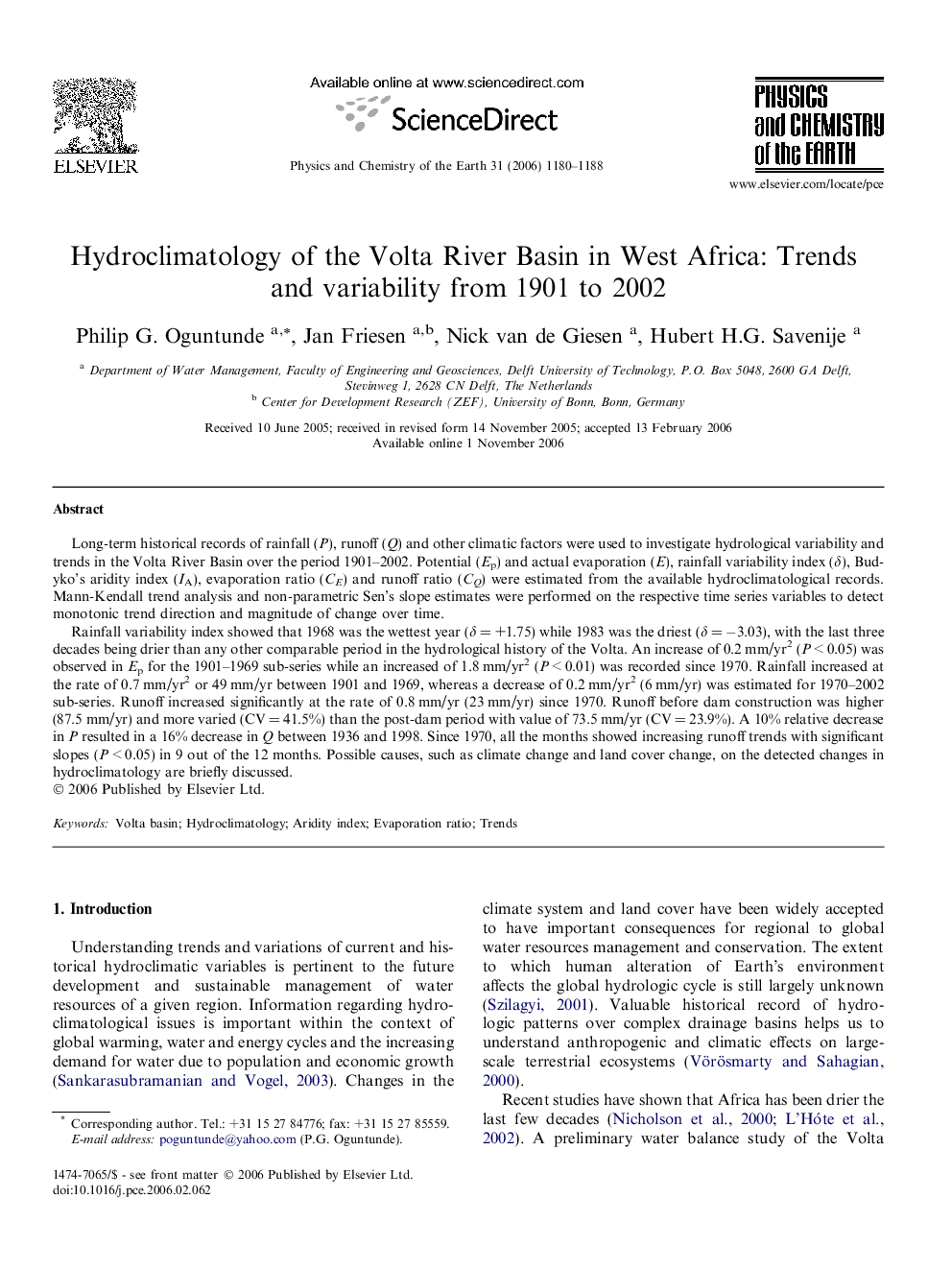| Article ID | Journal | Published Year | Pages | File Type |
|---|---|---|---|---|
| 4722255 | Physics and Chemistry of the Earth, Parts A/B/C | 2006 | 9 Pages |
Long-term historical records of rainfall (P), runoff (Q) and other climatic factors were used to investigate hydrological variability and trends in the Volta River Basin over the period 1901–2002. Potential (Ep) and actual evaporation (E), rainfall variability index (δ), Budyko’s aridity index (IA), evaporation ratio (CE) and runoff ratio (CQ) were estimated from the available hydroclimatological records. Mann-Kendall trend analysis and non-parametric Sen’s slope estimates were performed on the respective time series variables to detect monotonic trend direction and magnitude of change over time.Rainfall variability index showed that 1968 was the wettest year (δ = +1.75) while 1983 was the driest (δ = −3.03), with the last three decades being drier than any other comparable period in the hydrological history of the Volta. An increase of 0.2 mm/yr2 (P < 0.05) was observed in Ep for the 1901–1969 sub-series while an increased of 1.8 mm/yr2 (P < 0.01) was recorded since 1970. Rainfall increased at the rate of 0.7 mm/yr2 or 49 mm/yr between 1901 and 1969, whereas a decrease of 0.2 mm/yr2 (6 mm/yr) was estimated for 1970–2002 sub-series. Runoff increased significantly at the rate of 0.8 mm/yr (23 mm/yr) since 1970. Runoff before dam construction was higher (87.5 mm/yr) and more varied (CV = 41.5%) than the post-dam period with value of 73.5 mm/yr (CV = 23.9%). A 10% relative decrease in P resulted in a 16% decrease in Q between 1936 and 1998. Since 1970, all the months showed increasing runoff trends with significant slopes (P < 0.05) in 9 out of the 12 months. Possible causes, such as climate change and land cover change, on the detected changes in hydroclimatology are briefly discussed.
